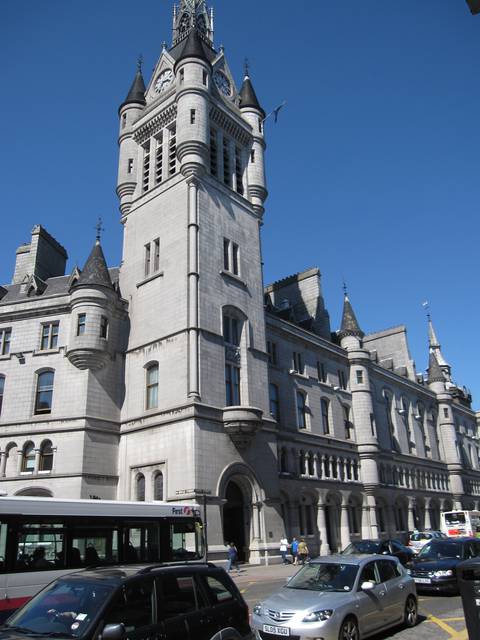 Aberdeen (Scots: Aiberdeen) is the third-largest city in Scotland, United Kingdom, with a population of over 220,000. It is a harbour city on Scotland's north-east coast, approximately 120 miles (190 km) north of Edinburgh and 400 miles (650 km) north of London, where the Rivers Dee and Don meet the North Sea. It is an important sea port, regional centre, and the hub of the North Sea oil industry.
Aberdeen (Scots: Aiberdeen) is the third-largest city in Scotland, United Kingdom, with a population of over 220,000. It is a harbour city on Scotland's north-east coast, approximately 120 miles (190 km) north of Edinburgh and 400 miles (650 km) north of London, where the Rivers Dee and Don meet the North Sea. It is an important sea port, regional centre, and the hub of the North Sea oil industry.
Although remote by UK standards, this is no backwater; Aberdeen is a prosperous and cosmopolitan city (partly due to North Sea oil) and is characterised by its grand and ornate architecture. Most buildings are constructed out of granite quarried in and around the city, and as a result, Aberdeen is often referred to as The Granite City. It is also known for its many outstanding parks, gardens and floral displays throughout the city, and for its long, sandy beach. Aberdeen boasts the title of Oil Capital of Europe and has been voted in several polls as the happiest place in Britain, with a 2006 poll citing access to large areas of greenery and community spirit. It has won the Britain in Bloom competition 10 times.
Aberdeen does not attract as many tourists as other Scottish destinations such as Edinburgh or St Andrews, and can feel more authentic. It is a great place to stop for a couple of days on a tour of Scotland, and especially good as a base for exploring the wider region to take advantage of the castles, golf, whisky distilleries, scenery, mountains (including skiing and snowboarding), coast and other attractions in Aberdeenshire and Royal Deeside. Alternatively, Aberdeen's remoteness yet comforts and cosmopolitan nature makes it an interesting destination for a short city break if you really want to get away from the stress.
Aberdeen is a city of 220,000 people - smaller than Glasgow and Edinburgh, but larger than other Scottish cities. By UK and even Scottish standards it is remote and often the subject of "far away" jokes (the nearest city is much smaller Dundee 70 miles away). Despite this, Aberdeen is surprisingly easy to reach and is a modern and prosperous city. British visitors are often surprised to find such a vibrant city so far north. Partly due to oil wealth and its status as the only large regional centre, it has the facilities of a much larger city. Together, all this gives Aberdeen an air of self-sufficiency found in few places in Britain today.
Aberdeen is one of the most prosperous places in Scotland, due primarily to the North Sea oil industry, and has low unemployment (2.2% in January 2017), leading to a low crime rate compared to other UK cities. Immigration due to the oil industry and the universities gives the city a cosmopolitan air that often surprises visitors, and when out and about in the city languages are heard from all over the world.
The price of oil fell dramatically - from US$125 per barrel (Brent crude) in 2012 to US$35 in early 2016, before rebounding to US$80 in September 2018. This depressed the Aberdeen economy, and there were job cuts in oil industries. Shops and restaurants were quieter and some hotel prices were cut.
Aberdeen has a seemingly-random mediaeval layout common for cities in Britain. The city-centre is divided by the mile-long Union Street which runs north-east/south-west (named after the 1800 "union" between Great Britain and Ireland). At the north-east end is the main square - the Castlegate - while leading off Union Street are important roads such as (east to west) Broad Street, Shiprow, Market Street, St. Nicholas Square, and Union Terrace. Running parallel to Union Street are Guild Street (where the railway and bus stations are ) and Upperkirkgate, which leads into Schoolhill. East of the Castlegate, roads lead to the beach and the sea, while at the other end of Union Street, roads lead to the West End (where many millionnaires live). Unusually, the harbour is in the city centre and is rapidly reached from the Shiprow, Market Street, Guild Street and Marischal Street. The River Dee does not flow through the city centre but a little to the south. The River Don flows through the north of the city, about two miles (3.2 km) north of the city centre.
- Tourist Information Centre, 23 Union Street, AB11 5BP (at the corner with the Shiprow, +44 1224 269180. M-Sa 09:00-18:30, more restricted hours on Sundays. A useful point of contact for more information on attractions. Offers free Wi-Fi.
Tourist Information Centre, 23 Union Street, AB11 5BP (at the corner with the Shiprow, +44 1224 269180. M-Sa 09:00-18:30, more restricted hours on Sundays. A useful point of contact for more information on attractions. Offers free Wi-Fi.
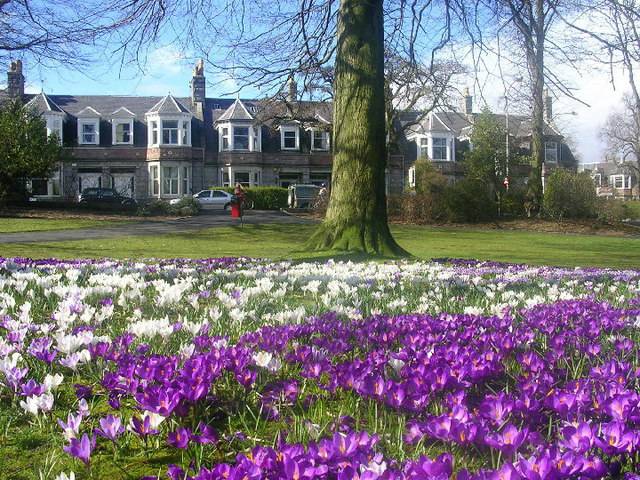 While the location has been inhabited for over 8000 years, a city did not develop until the middle-ages. The modern city was formed by two settlements which grew together - Old Aberdeen close to the mouth of the River Don (home to the University since 1495), and New Aberdeen, about 2 miles (3.2 km) south where a stream, the Denburn, met the River Dee (the Denburn is long built-over by a road and railway but its route is crossed by bridge on Union Street).
While the location has been inhabited for over 8000 years, a city did not develop until the middle-ages. The modern city was formed by two settlements which grew together - Old Aberdeen close to the mouth of the River Don (home to the University since 1495), and New Aberdeen, about 2 miles (3.2 km) south where a stream, the Denburn, met the River Dee (the Denburn is long built-over by a road and railway but its route is crossed by bridge on Union Street).
Much of the city's prosperity came from the sea and its harbour - until the mid-20th century fishing and mercantile trading were mainstays of the economy, along with granite quarrying and carving, local agriculture and manufacturing (e.g. paper and cloth). Then, these industries declined while Aberdeen's location made it perfect as the main base for North Sea oil. Today, most people work for one of the many oil-related companies or know someone who does, and these jobs are well-paid. Many work offshore on the North Sea platforms and commute for shifts of two weeks or so by helicopter, which are conspicuous in the city's skies. However, a section of the population did not benefit from North Sea oil and still experiences poverty and deprivation. Aberdeen has two universities with a total of 30,000 students: the University of Aberdeen, which was founded in 1495 and is one of the oldest in the world; and Robert Gordon University (RGU).
During the 18th, 19th and early 20th centuries, growing prosperity led to grand civil engineering projects, including Union Street (much of which is actually bridge) and the construction of many large and ornate buildings. Grand architecture is one of the city's distinctive features, particularly Neoclassical, Gothic Revival and Scottish Baronial styles. The mediaeval buildings had been made of wood, and following several disastrous fires, the city's leaders resolved to rebuild only in stone. The local stone they had, quarried in the city and throughout Aberdeenshire, was granite, which was used to make nearly all pre-1960s buildings and gives the city the name "The Granite City". On a sunny day the granite sparkles in the sunshine, although on "dreich" (grey and cloudy) days the grey granite buildings can give the city a much more gloomy atmosphere.
As technology improved, granite could be worked more cheaply, allowing later buildings to have ever more ornately-carved stonework such as at Marischal College (pronounced like "Marshall"). Granite began to be exported by sea, particularly to London where many buildings are constructed of Aberdeen or Aberdeenshire granite (e.g. the fountains at Trafalgar Square). However, highly-carved granite was still expensive and demonstrated the owner's success and status, with side and rear walls left in cheaper, unworked stone as in Bath. Many of these buildings (particularly in the city centre) are now in need of restoration and have an air of faded grandeur. Buildings are no longer constructed in granite but it is still used extensively as a facing material and granite chippings are heavily used in the concrete of modern buildings.
After the discovery of North Sea oil in the 1960s, the city grew from an elegant but declining backwater dependent on fishing, to a thriving centre of the energy industry. Today, in addition to the growing population, large numbers commute to Aberdeen from exurbs and outlying towns, with heavy traffic at rush hour. Despite this, some areas of the city retain the feel of a village. Perhaps the best examples of this are the line of suburbs stretching towards Royal Deeside, including Cults and Peterculter (pronounced Petercooter).
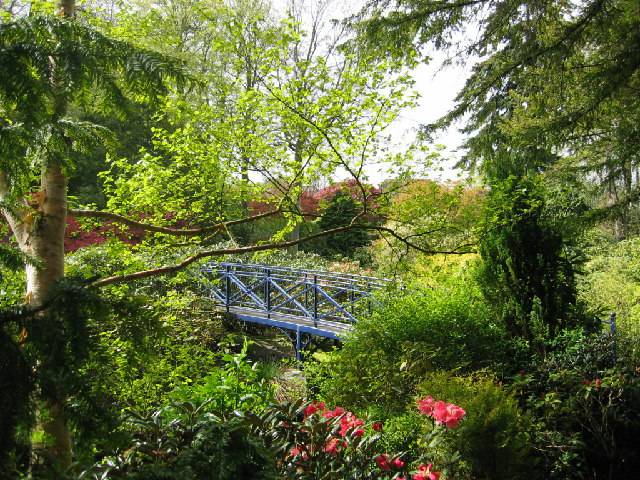
Two daily local newspapers serve Aberdeen: the tabloid Evening Express and the more serious Press & Journal (often referred to by Aberdonians as the "P&J", it also publishes editions specific to other areas in the North of Scotland). There is an urban legend that the Press & Journal once ran the headline, "Aberdeen Man Lost at Sea". It was April 1912 and the story referred to the sinking of the Titanic. Whether this is true or not, reading these can give an interesting angle on developments and life in the city and surrounding towns. You can buy them at any newsagent, supermarket, convenience store, street news-stand, and other places throughout the city.
Aberdeen and the north-east of Scotland also feature in fiction. Lewis Grassic Gibbon's trio of novels tell the story of a young woman, Chris Guthrie, growing up and living in the north-east of Scotland. The first, Sunset Song (1932) tells her story of growing up in a rural area just south of Aberdeen, at a time of change in society and the rural way of life. Sunset Song is regarded as one of the most important Scottish novels of the 20th century and many Aberdonians have studied it in school. The other works of the trilogy are Cloud Howe (1933) and Grey Granite (1934), which feature her life continuing in a north-east city that may or may not be Aberdeen.
Numerous crime novels by Scottish author Stuart MacBride are set in Aberdeen. His best-selling thrillers featuring Detective Sergeant Logan McRae portray a fictional darker side of the city and its environs, but make frequent reference to real-life city locations. These include Cold Granite (2005), Dying Light (2006), Blind Eye (2009) Shatter the Bones (2011), Close to the Bone (2013) and The Missing and the Dead (2015). These novels often feature prominently in bookstore displays in the city. Iain Banks' 2012 novel Stonemouth (adapted by the BBC into a 2015 drama serial) follows a man returning to a small seaport town north of Aberdeen after leaving due to a sexual scandal. Its name is adapted from Stonehaven, a town a few miles south of Aberdeen, and many scenes of the TV show were filmed in Macduff on the north coast of Aberdeenshire.
In addition, there is an anthology of poems about Aberdeen called Silver: An Aberdeen Anthology (2009) edited by Alan Spence and Hazel Hutchison. Also insightful is historian Ian R. Smith's reflections on his hometown and life there, after having moved away, published as Aberdeen: Beyond the Granite (2010). If you are interested in books about Aberdeen or by local writers, call into Waterstone's bookstore (Union Street/Trinity Shopping Centre) or WH Smith (in the St. Nicholas Centre). Each store has a local interest section with a surprising range of relevant books about Aberdeen and life in the city. Also, the city's public Central Library on Rosemount Viaduct has a local section just inside the doorway and is free for all to browse. Most insightful about the city's architecture are Aberdeen: The Illustrated Architectural Guide by W. A. Brogden (4th edition, 2012) and The Granite Mile: The Story of Aberdeen's Union Street (2010) by Diane Morgan, among others. There are a wide range of books published about the city's history, architecture, local life, and other topics.
Despite the northerly latitude (the same as Riga, Gothenburg, Juneau, Alaska and slightly further than Moscow), because of its coastal location Aberdeen's climate is relatively mild although a few degrees colder than much of the rest of Britain. Contrary to expectations, sunny days are frequent and it does not rain often but when it does it tends to be heavy. Aberdeen weather is highly changeable, with a sunny day possibly changing rapidly to cloudy or even rain (and vice versa). At other times, weather may remain constant for days and the changes are often unpredictable so dress in layers. It gets surprisingly warm in the sun (especially if the wind is light) so be prepared to remove layers as well. An umbrella isn't usually helpful because rain is often accompanied by strong winds which will turn your umbrella into an impromptu sail or else just turn it inside-out. All year round, a sea mist called the Haar not infrequently appears during the evening or night but usually dissipates in the morning. Air pollution is low compared to the rest of the UK.
In summer, days are long: at midsummer (21 June) dawn is around 3AM and dusk around 11PM, while nautical twilight lasts the entire night. There are many sunny days and while often warm, the temperature rarely exceeds 25°C (77°F). There are also cooler summer days. These sunny yet cool days increase in Spring and Autumn.
Conversely, winter days are short with sunrise in late-December not till after 8:30AM and sunset around 3:30PM. Days are equally often sunny and cloudy, but strong, biting winds off the North Sea are common and it can feel bitterly cold even in the sun. Snow is not frequent and there is lying snow only a couple of weeks in most years, but if you'll be in Aberdeen for any significant time in winter, take your snow boots or be prepared to buy some.
The best time is during the summer months. Days are long (reaching 18 hours at the summer solstice) and most days are warm and sunny. The granite sparkles in the sun and is at its most impressive against the (surprisingly frequent) blue skies which last late into the evening. Most of the festivals occur in summer and it's also the best time to visit attractions in the surrounding region. Alternatively, late spring and early autumn are also good times to visit. Autumn in Aberdeen can be pretty, particularly in the many parks and green spaces, but be prepared for cooler weather and possibly chilly winds. In odd-numbered years (e.g. 2013) avoid early September, when the giant Offshore Europe oil convention takes place and every hotel room in the region is booked up months in advance, with hotels charging extortionate rates. Unless you're interested in skiing or snowboarding in the mountains, winter months are best avoided. These tend to be dark, cold and windy, while the grey granite can appear depressing on the many overcast days and there is less happening of interest to visitors.
Scottish English is the everyday language. Unlike the highlands and islands, Scottish Gaelic (pronounced "gallic" not "gae-lic") is not widely spoken and is rarely heard. You will also hear other languages spoken on the street by many Aberdonians who have come from other places, with Polish, Russian, Mandarin and numerous other European languages heard often. However, the local dialect is called Doric, now spoken primarily by middle-aged and older people and those from lower social classes. Doric can be more confusing at first than other Scottish dialects. This includes for native English speakers - while Scots accents are frequently heard on TV and radio around the UK and other places, Aberdeen accents are not.
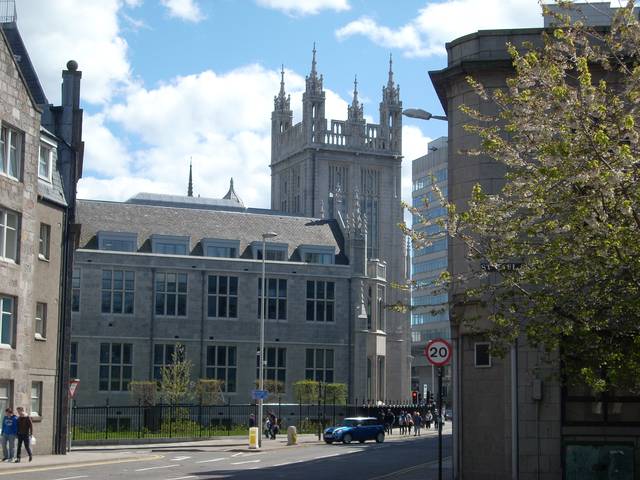
With time you quickly pick up what people mean, which is often clear from the context anyway. In fact, most people speak in a standard Scots accent similar to that elsewhere which is easy for most visitors to understand. However, you are likely to hear Doric spoken by some while out and about, particularly if you travel by taxi or bus. Few young people speak it today, or may speak it only with close family or other Aberdonians and switch to standard Scots English when around others.
Here are a few commonly used words and phrases:
- "Fit like?" - A greeting, essentially, "Hello, how are you?".
- "Nae bad, yersel?" - "Not bad, yourself?".
- "Fit?" - "What?".
- "Fa?" - "Who?".
- "Far?" - "Where?".
- "Fan?"- "When?".
- "Aye" - "Yes" (as used throughout Scotland).
- "Na'" - "No" (usually, an n sound followed by a vowel constitutes "no".
- "Wee" - "Little", though this famous Doric word has become common throughout Scotland and in other areas worldwide.
- "Dinnae ken/Da ken" - "Don't know".
- "Hay min" - "Excuse me good sir?"
- "far aboot ye fae?" where are you from?
- "ben a/eh hoose" - "Through the house/in the other room"
- "gie" - "give"
- "tea" - can be used to mean an evening meal, i.e. supper, as well as the beverage.
- "Foos yer doos?" - A less common way to say "how are you?", literally translated to "how are your pigeons?". The proper Doric response is "aye, peckin awa'".
If you politely suggest you don't understand, almost all Doric speakers will be able to switch to more standard English to converse with you, particularly if you are from outside the UK.
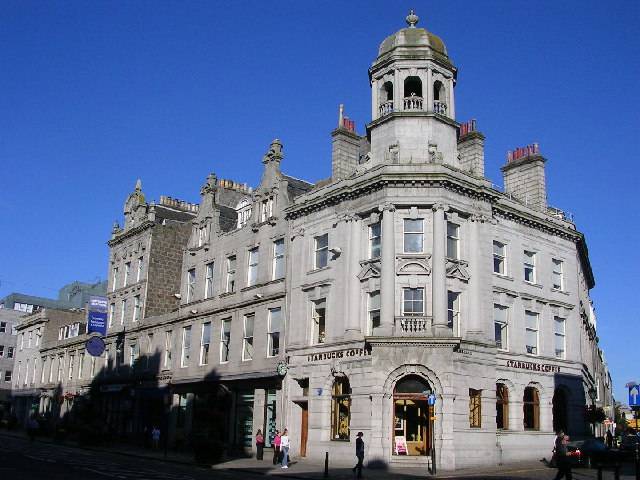
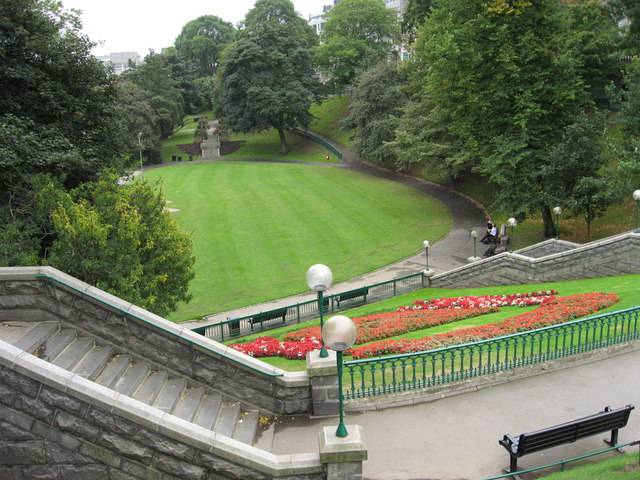
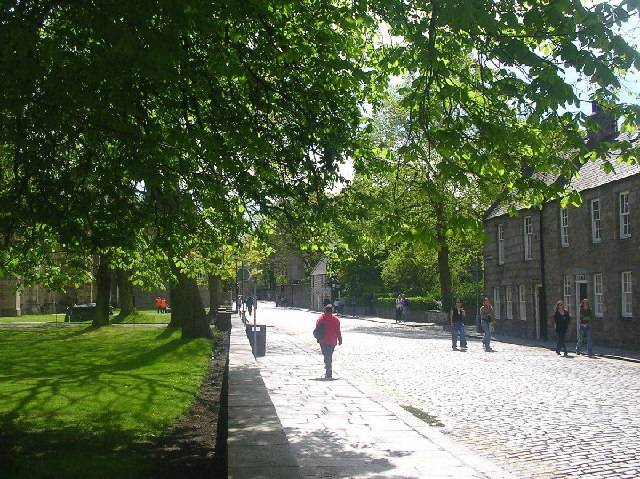
- Granite architecture. Aberdeen's granite buildings form one of the most celebrated cityscapes in Britain, with beautiful and architecturally significant buildings everywhere, especially in the city centre. However, some (particularly on Union Street and streets nearby) are now in need of restoration, much as the New Town of Edinburgh was before its restoration in the late 20th century. As such, many of the great granite buildings of the city centre have a sense of faded grandeur, though some (such as Marischal College - see below) have been dramatically restored. The Wikipedia article on Architecture in Aberdeen gives a good introduction w:Architecture_of_Aberdeen but here are a few to get you started as you walk around the city centre. The newly restored Marischal College on Broad Street, displays what poet John Betjeman called "tower on tower, forests of pinnacles, a group of palatial buildings rivalled only by the Houses of Parliament at Westminster". Then try the Town House (i.e. city hall) on Union Street, with its confident Victorian tower and street frontage. The Salvation Army Citadel on the Castlegate is an excellent example of the Scottish Baronial style, with its fairy-tale turrets, while a walk up (and down) Union Street with its mile of impressive granite buildings is a must. As you walk along Union Street, look up; the architecture is often not visible from street-level. Unlike other grand streets in the UK (such as Grey Street in Newcastle or the Royal Crescent in Bath), but like Princes Street in Edinburgh, each building on Union Street is different to the next in stature and architectural style. You will see a wide range of architectural styles, from highly ornamented to robust and Scottish-looking. Then, on Rosemount Viaduct, the cluster of His Majesty's Theatre, St. Mark's Church and the Central Library form a widely-praised trio. City bookstores and the Central Library carry books about Aberdeen's architecture, such as Aberdeen: An Illustrated Architectural Guide by W. A. Brogden (2012,, 4th ed.) and The Granite Mile by Diane Morgan (2008) on the architecture of Union Street.

- Union Terrace Gardens. A small city-centre park on one side of Union Terrace, just off Union Street. A small river, the Denburn, used to flow past here but is now covered by the railway line. Union Terrace Gardens is a rare haven of tranquility, greenery and natural beauty in the city-centre. In summer look out for the floral coat of arms, and in warm weather citizens sunbathe and picnic on the lawns. All year round, from the gardens you can appreciate some of the grand architecture on Union Terrace and Rosemount Viaduct. In winter, the park is beautiful in the snow. In 2011-12 the park was threatened with demolition to build a heavily-engineered "City Garden" as a new civic heart for the city, sponsored by local oil tycoon Sir Ian Wood who offered £50 million of his own money to part-finance the scheme. The project was extremely controversial but citizens voted narrowly in favour of the redevelopment in a referendum. However, following the 2012 elections to the city council the new city administration scrapped the controversial project. Entrance free.
- Aberdeen Beach. Aberdeen's long sandy beach once made it something of a holiday resort, advertised by railway travel posters (that you may see at the Tourist Information Centre on Union Street). The beach stretches from picturesque Footdee (see below) at one end to the mouth of the River Don over 2 miles (3.2 km) north. While it's rarely hot enough for sunbathing and the North Sea is cold all year round, it's a fantastic place for a jog or a bracing walk. Surfers and windsurfers are also frequently to be found there. On sunny days, the beach is a popular place to spend time and one of the best spots in the city for a romantic walk. Amenities at the southern end include an amusement park, ice arena, leisure centre and leisure park with restaurants and cinema.
- Footdee. A former fishing village absorbed by the city, in the streets around Pocra Quay. It is at what was once the foot of the River Dee (hence the name) before the course of the river was artificially diverted to improve the harbour. This area is a laid-back cluster of traditional, small, quaint houses and quirky outhouses, and the area was specially constructed in the 19th century to house a fishing community. Footdee sits at the harbour mouth, where dolphins can often be seen.
- Old Aberdeen. The quaintest part of the city and location of the University of Aberdeen's King's College Campus, along the High Street and the streets leading off it, with modern university buildings further from it. The Chapel and Crown Tower at Kings College date from the 16th century (the tower is a symbol of the city and of the university), while many of the other houses and buildings on the High Street and nearby are centuries old. The university's Kings Museum (M-F 9AM-5PM, free) a little way up the High Street puts on rotating displays from the university's collections. The new University Library (looks like a glass cube with zebra stripes) has a gallery space open every day with rotating exhibitions (free; check website for opening times), and you can explore the library (it's open to the public) which has outstanding views of the whole city and sea from the upper floors. The Old Town House at the top of the High Street (looks like it's in the middle of the roadway) has a visitor centre with leaflets on the area's heritage and rotating exhibitions. You can also explore the scenic and serene Cruickshank Botanic Garden which belongs to the university and is used for teaching and research,and is open to the public. The nearby St. Machar's Cathedral on the Chanonry (a continuation of the High Street) with its two spires, was completed in 1530 and is steeped in history and worth a visit (Aberdeen has three cathedrals, all named after saints). As it is part of the Protestant Church of Scotland, it does not actually function as a cathedral but is always called this. To get to Old Aberdeen, bus route No.20 from Broad Street takes you right there - get off at the High Street. Alternatively take No.1 or No.2 from Union Street and get off on King Street at the university campus (by the playing fields).
- Winter Gardens, +44 1224 585310. Daily 09:30 to 16:30 (Nov-Mar), 17:30 (April, Sep-Oct) or 19:30 (May-Aug). The David Welch Winter Gardens are one of the most popular gardens in Scotland and one of the largest indoor gardens in Europe. Consisting of a variety of glasshouses, they house a wide range of tropical and exotic plants, many of them rare. The frog that rises out of the pond is also amusing, and the Japanese Garden (one of the few exterior spaces) is tranquil. The entrances to Duthie Park are at the end of Polmuir Road in Ferryhill (AB11 7TH) or at Riverside Drive just after the railway bridge (this entrance also has a free car park), and you can walk through the park to the Winter Gardens. Duthie Park has benefitted from a £5 million renovation to restore it to its Victorian glory. Admission free.
- Johnston Gardens, Viewfield Road (To get there, take bus route No.16 from Union Street, or a taxi.. Daily 0:00 until an hour before dusk. This 1-ha park in a middle-class suburb is one of the most spectacular in Scotland. Packed with dramatic floral displays, it also has a stream, waterfalls, ponds and rockeries. Many have suggested that Aberdeen won the Britain in Bloom award so many times on the basis of this park alone. The pond has ducks, there is a children's play area, and also toilets are provided. Entrance free.
- Hazlehead Park. 08:00 until an hour before dusk. Large 180 hectare park on land granted to the city by King Robert the Bruce in 1319. Gardens include the Queen Mother Rose Garden, and the North Sea Memorial Garden to remember the 167 people killed on the Piper Alpha oilrig in 1988. Get lost in the hedge maze then have a cuppa in the cafe. Pay a £3 admission charge to see a collection of domestic and farm animals in the Pets Corner. free.
Many city museums and galleries are closed on Mondays, though the King's Museum at the University of Aberdeen is open as are other attractions.
- Aberdeen Maritime Museum, Shiprow, +44 1224 337700. Tu-Sa 10:00-17:00, Su 12:00-15:00. This museum, rated 5-star by the Scottish Tourist Board, tells the story of Aberdeen's relationship with the sea, from fishing to trade to North Sea oil. It offers an extraordinary insight into the mechanics and technology of ships and oil rigs, Aberdeen's rich maritime history and the lives of some of the people who have worked offshore in the North Sea for the past 500 years. The newest part of the complex is a blue, glass-fronted building on the cobbled Shiprow. Inside is a spiral walkway, rising upwards around an eye-catching model of an oil rig. Connected to this structure are the much older buildings which take visitors through a series of castle-style corridors and staircases to reach the numerous room sets, historical artefacts and scale models. If your time in Aberdeen is limited, go and see this. There is so much to see, and even the buildings themselves are worth a look. There is also a restaurant - slightly expensive, but the food is pretty good. There are excellent views of the harbour from the top floor. Admission free.
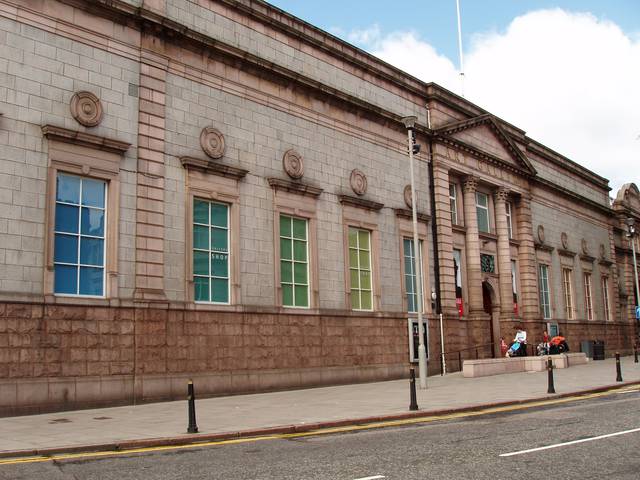

- Aberdeen Art Gallery, Schoolhill, +44 1224 523700. Tu-Sa 10:00-17:00, Su 14:00-17:00 - the gallery is closed for redevelopment until 2 November 2019. The Aberdeen Art Gallery is set in a Victorian building with an exquisite marble and granite main hall. On the ground floor are housed modern works including pieces by Tracy Emin and Gilbert & George, with many others. Upstairs hang more traditional paintings and sculpture. These include Impressionist pieces and workandy the Scottish Colourists. There are frequent temporary exhibitions (see website) and also display of antique silverware and decorative pieces. Columns in the main hall display the many different colours of local granite used to build the city. There is a good gift shop too. For those who like art, an afternoon could easily be spent here, but at least a quick browse is well worth it for anyone. Admission free.
- The Gordon Highlanders Museum, St. Lukes Viewfield Road, +44 1224 311200. Feb-Nov Tu-Sa 10:30-16:30, Su 13:30PM-16:30. At the Gordon Highlanders Museum you can re-live the compelling and dramatic story of one of the British Army's most famous regiments, through the lives of its outstanding personalities and of the kilted soldiers of the North East of Scotland who filled its ranks. Exhibits include a real Nazi flag from Hitler's staff car, and there is a small cinema where you can watch a film on the history of the regiment. For the younger visitors there are a number of uniforms to try on, and there is also a coffee shop. For those interested in military history this small gem is a must. To get there, take route No.16 from Union Street or taxi. Adults: £7.00, Children: £3.50.
- Provost Skene's House, +44 1224 641086. Closed, expected to reopen in 2020.. Guestrow (walk under passageway at St. Nicholas House on Broad Street and it's in the little plaza there). Scottish towns and cities have a "provost" instead of a mayor and this house used to belong to Provost George Skene. The large, picturesque house dates from 1545 (it's the oldest house left in the city) and houses various rooms furnished to show how people in Aberdeen lived in the 17th, 18th and 19th centuries. There is an excellent cafe in the cellar. Admission free.
- Tolbooth Museum, Castle Street (i.e. the eastern part of Union Street, before it enters the Castlegate square.)., +44 1224 621167. M-Sa 10:00-17:00, Su 12:00-15:00. This is Aberdeen's museum of civic history; it is now open every day (though in the past it opened only in summer). In Scottish towns and cities, a "tolbooth" was the main municipal building or Town Hall, providing council meeting space, a courthouse and jail. Aberdeen's Tolbooth Museum is in a 17th-century tolbooth which had housed jail cells in centuries past, and played a key role in the city's history, including the Jacobite rebellions. The museum has fascinating displays on crime and punishment, and on the history of the city. The entrance is at the Town House (the modern equivalent of the Tolbooth!), just along from the Sheriff Court entrance and next to the bus stop. Due to the ancient nature of the building, the Tolbooth has limited access for visitors with mobility difficulties. Free.
- Kings Museum. M W-F 10:00-16:00, Tu 10:00-19:30, Sa 11:00-16:00. At the University of Aberdeen's King's College campus, High Street, Old Aberdeen (from city centre, take bus 20 from Broad Street) The University of Aberdeen holds extensive collections of artifacts from a variety of cultures around the world. In the past, it displayed them in the Marischal Museum at Marischal College, but this closed during its redevelopment as the City Council's main offices, and the university has shown no intention to re-open it. Its replacement is the King's Museu on campus. This museum is on the High Street (in the middle of the King's College campus) in a building which served as the Town House (i.e. town hall) of Old Aberdeen when it was a separate town. The museum puts on rotating exhibitions drawn from these collections, often with a focus on archaeology and anthropology. Frequently, students and university staff contribute to events at the museum to add extra insight or bring the artifacts to life and there are evening lectures. While on campus, you can also visit the gallery at the university's impressive new Sir Duncan Rice Library (which looks like a zebra-striped tower that you'll see from all over campus), which puts on rotating exhibitions from the university's other collections. Its small public gallery on the ground floor shows changing exhibitions from the university's collections. While there, ask at the reception desk to go into the main library (it's open to the public but they have to give you a pass for the turnstile) and take the lift to Level 7. You can admire views of the sea and almost the entire city, including a quiet reading room with panoramic sea views - can you spot the lighthouse? Admission free (to both the museum and library).
- Zoology Museum (at University of Aberdeen), Zoology Building, St. Machar Drive (The museum is in the university's Zoology Building, which towers over the Botanic Gardens. Take bus No.20 from city centre and get off at the end of the High Street, and walk through the Gardens to reach it. Or take bus No.19 and get off just outside it., +44 1224 274330. M-F 09:00-17:00. This museum is on campus, on the ground floor of the university's Zoology Department. It has a big collection of zoological specimens, from protozoa to the great whales. Exhibits include taxidermy, skeletons, skins, fluid-preserved specimens and models. Free.
- Castles within an hour or two's drive from Aberdeen are Dunottar Castle at Stonehaven, Crathes, Craigevar and Drum castles around Banchory, and Balmoral above Ballater.
Aberdeen Maritime Museum, Shiprow, +44 1224 337700. Tu-Sa 10:00-17:00, Su 12:00-15:00. This museum, rated 5-star by the Scottish Tourist Board, tells the story of Aberdeen's relationship with the sea, from fishing to trade to North Sea oil. It offers an extraordinary insight into the mechanics and technology of ships and oil rigs, Aberdeen's rich maritime history and the lives of some of the people who have worked offshore in the North Sea for the past 500 years. The newest part of the complex is a blue, glass-fronted building on the cobbled Shiprow. Inside is a spiral walkway, rising upwards around an eye-catching model of an oil rig. Connected to this structure are the much older buildings which take visitors through a series of castle-style corridors and staircases to reach the numerous room sets, historical artefacts and scale models. If your time in Aberdeen is limited, go and see this. There is so much to see, and even the buildings themselves are worth a look. There is also a restaurant - slightly expensive, but the food is pretty good. There are excellent views of the harbour from the top floor. Admission free.
Aberdeen Art Gallery, Schoolhill, +44 1224 523700. Tu-Sa 10:00-17:00, Su 14:00-17:00 - the gallery is closed for redevelopment until 2 November 2019. The Aberdeen Art Gallery is set in a Victorian building with an exquisite marble and granite main hall. On the ground floor are housed modern works including pieces by Tracy Emin and Gilbert & George, with many others. Upstairs hang more traditional paintings and sculpture. These include Impressionist pieces and workandy the Scottish Colourists. There are frequent temporary exhibitions (see website) and also display of antique silverware and decorative pieces. Columns in the main hall display the many different colours of local granite used to build the city. There is a good gift shop too. For those who like art, an afternoon could easily be spent here, but at least a quick browse is well worth it for anyone. Admission free.
The Gordon Highlanders Museum, St. Lukes Viewfield Road, +44 1224 311200. Feb-Nov Tu-Sa 10:30-16:30, Su 13:30PM-16:30. At the Gordon Highlanders Museum you can re-live the compelling and dramatic story of one of the British Army's most famous regiments, through the lives of its outstanding personalities and of the kilted soldiers of the North East of Scotland who filled its ranks. Exhibits include a real Nazi flag from Hitler's staff car, and there is a small cinema where you can watch a film on the history of the regiment. For the younger visitors there are a number of uniforms to try on, and there is also a coffee shop. For those interested in military history this small gem is a must. To get there, take route No.16 from Union Street or taxi. Adults: £7.00, Children: £3.50.
Provost Skene's House, +44 1224 641086. Closed, expected to reopen in 2020.. Guestrow (walk under passageway at St. Nicholas House on Broad Street and it's in the little plaza there). Scottish towns and cities have a "provost" instead of a mayor and this house used to belong to Provost George Skene. The large, picturesque house dates from 1545 (it's the oldest house left in the city) and houses various rooms furnished to show how people in Aberdeen lived in the 17th, 18th and 19th centuries. There is an excellent cafe in the cellar. Admission free.
Tolbooth Museum, Castle Street (i.e. the eastern part of Union Street, before it enters the Castlegate square.)., +44 1224 621167. M-Sa 10:00-17:00, Su 12:00-15:00. This is Aberdeen's museum of civic history; it is now open every day (though in the past it opened only in summer). In Scottish towns and cities, a "tolbooth" was the main municipal building or Town Hall, providing council meeting space, a courthouse and jail. Aberdeen's Tolbooth Museum is in a 17th-century tolbooth which had housed jail cells in centuries past, and played a key role in the city's history, including the Jacobite rebellions. The museum has fascinating displays on crime and punishment, and on the history of the city. The entrance is at the Town House (the modern equivalent of the Tolbooth!), just along from the Sheriff Court entrance and next to the bus stop. Due to the ancient nature of the building, the Tolbooth has limited access for visitors with mobility difficulties. Free.
Kings Museum. M W-F 10:00-16:00, Tu 10:00-19:30, Sa 11:00-16:00. At the University of Aberdeen's King's College campus, High Street, Old Aberdeen (from city centre, take bus 20 from Broad Street) The University of Aberdeen holds extensive collections of artifacts from a variety of cultures around the world. In the past, it displayed them in the Marischal Museum at Marischal College, but this closed during its redevelopment as the City Council's main offices, and the university has shown no intention to re-open it. Its replacement is the King's Museu on campus. This museum is on the High Street (in the middle of the King's College campus) in a building which served as the Town House (i.e. town hall) of Old Aberdeen when it was a separate town. The museum puts on rotating exhibitions drawn from these collections, often with a focus on archaeology and anthropology. Frequently, students and university staff contribute to events at the museum to add extra insight or bring the artifacts to life and there are evening lectures. While on campus, you can also visit the gallery at the university's impressive new Sir Duncan Rice Library (which looks like a zebra-striped tower that you'll see from all over campus), which puts on rotating exhibitions from the university's other collections. Its small public gallery on the ground floor shows changing exhibitions from the university's collections. While there, ask at the reception desk to go into the main library (it's open to the public but they have to give you a pass for the turnstile) and take the lift to Level 7. You can admire views of the sea and almost the entire city, including a quiet reading room with panoramic sea views - can you spot the lighthouse? Admission free (to both the museum and library).
Zoology Museum (at University of Aberdeen), Zoology Building, St. Machar Drive (The museum is in the university's Zoology Building, which towers over the Botanic Gardens. Take bus No.20 from city centre and get off at the end of the High Street, and walk through the Gardens to reach it. Or take bus No.19 and get off just outside it., +44 1224 274330. M-F 09:00-17:00. This museum is on campus, on the ground floor of the university's Zoology Department. It has a big collection of zoological specimens, from protozoa to the great whales. Exhibits include taxidermy, skeletons, skins, fluid-preserved specimens and models. Free.
Castles within an hour or two's drive from Aberdeen are Dunottar Castle at [[Stonehaven]], Crathes, Craigevar and Drum castles around [[Banchory]], and Balmoral above [[Ballater]].
Granite architecture. Aberdeen's granite buildings form one of the most celebrated cityscapes in Britain, with beautiful and architecturally significant buildings everywhere, especially in the city centre. However, some (particularly on Union Street and streets nearby) are now in need of restoration, much as the [[Edinburgh/New Town|New Town of Edinburgh]] was before its restoration in the late 20th century. As such, many of the great granite buildings of the city centre have a sense of faded grandeur, though some (such as Marischal College - see below) have been dramatically restored. The Wikipedia article on Architecture in Aberdeen gives a good introduction [[w:Architecture_of_Aberdeen]] but here are a few to get you started as you walk around the city centre. The newly restored Marischal College on Broad Street, displays what poet John Betjeman called "tower on tower, forests of pinnacles, a group of palatial buildings rivalled only by the Houses of Parliament at Westminster". Then try the Town House (i.e. city hall) on Union Street, with its confident Victorian tower and street frontage. The Salvation Army Citadel on the Castlegate is an excellent example of the Scottish Baronial style, with its fairy-tale turrets, while a walk up (and down) Union Street with its mile of impressive granite buildings is a must. As you walk along Union Street, look up; the architecture is often not visible from street-level. Unlike other grand streets in the UK (such as Grey Street in [[Newcastle upon Tyne|Newcastle]] or the Royal Crescent in [[Bath]]), but like Princes Street in [[Edinburgh]], each building on Union Street is different to the next in stature and architectural style. You will see a wide range of architectural styles, from highly ornamented to robust and Scottish-looking. Then, on Rosemount Viaduct, the cluster of His Majesty's Theatre, St. Mark's Church and the Central Library form a widely-praised trio. City bookstores and the Central Library carry books about Aberdeen's architecture, such as Aberdeen: An Illustrated Architectural Guide by W. A. Brogden (2012,, 4th ed.) and The Granite Mile by Diane Morgan (2008) on the architecture of Union Street.
Union Terrace Gardens. A small city-centre park on one side of Union Terrace, just off Union Street. A small river, the Denburn, used to flow past here but is now covered by the railway line. Union Terrace Gardens is a rare haven of tranquility, greenery and natural beauty in the city-centre. In summer look out for the floral coat of arms, and in warm weather citizens sunbathe and picnic on the lawns. All year round, from the gardens you can appreciate some of the grand architecture on Union Terrace and Rosemount Viaduct. In winter, the park is beautiful in the snow. In 2011-12 the park was threatened with demolition to build a heavily-engineered "City Garden" as a new civic heart for the city, sponsored by local oil tycoon Sir Ian Wood who offered £50 million of his own money to part-finance the scheme. The project was extremely controversial but citizens voted narrowly in favour of the redevelopment in a referendum. However, following the 2012 elections to the city council the new city administration scrapped the controversial project. Entrance free.
Aberdeen Beach. Aberdeen's long sandy beach once made it something of a holiday resort, advertised by railway travel posters (that you may see at the Tourist Information Centre on Union Street). The beach stretches from picturesque Footdee (see below) at one end to the mouth of the River Don over 2 miles (3.2 km) north. While it's rarely hot enough for sunbathing and the North Sea is cold all year round, it's a fantastic place for a jog or a bracing walk. Surfers and windsurfers are also frequently to be found there. On sunny days, the beach is a popular place to spend time and one of the best spots in the city for a romantic walk. Amenities at the southern end include an amusement park, ice arena, leisure centre and leisure park with restaurants and cinema.
Footdee. A former fishing village absorbed by the city, in the streets around Pocra Quay. It is at what was once the foot of the River Dee (hence the name) before the course of the river was artificially diverted to improve the harbour. This area is a laid-back cluster of traditional, small, quaint houses and quirky outhouses, and the area was specially constructed in the 19th century to house a fishing community. Footdee sits at the harbour mouth, where dolphins can often be seen.
Old Aberdeen. The quaintest part of the city and location of the University of Aberdeen's King's College Campus, along the High Street and the streets leading off it, with modern university buildings further from it. The Chapel and Crown Tower at Kings College date from the 16th century (the tower is a symbol of the city and of the university), while many of the other houses and buildings on the High Street and nearby are centuries old. The university's Kings Museum (M-F 9AM-5PM, free) a little way up the High Street puts on rotating displays from the university's collections. The new University Library (looks like a glass cube with zebra stripes) has a gallery space open every day with rotating exhibitions (free; check website for opening times), and you can explore the library (it's open to the public) which has outstanding views of the whole city and sea from the upper floors. The Old Town House at the top of the High Street (looks like it's in the middle of the roadway) has a visitor centre with leaflets on the area's heritage and rotating exhibitions. You can also explore the scenic and serene Cruickshank Botanic Garden which belongs to the university and is used for teaching and research,and is open to the public. The nearby St. Machar's Cathedral on the Chanonry (a continuation of the High Street) with its two spires, was completed in 1530 and is steeped in history and worth a visit (Aberdeen has three cathedrals, all named after saints). As it is part of the Protestant Church of Scotland, it does not actually function as a cathedral but is always called this. To get to Old Aberdeen, bus route No.20 from Broad Street takes you right there - get off at the High Street. Alternatively take No.1 or No.2 from Union Street and get off on King Street at the university campus (by the playing fields).
Winter Gardens, +44 1224 585310. Daily 09:30 to 16:30 (Nov-Mar), 17:30 (April, Sep-Oct) or 19:30 (May-Aug). The David Welch Winter Gardens are one of the most popular gardens in Scotland and one of the largest indoor gardens in Europe. Consisting of a variety of glasshouses, they house a wide range of tropical and exotic plants, many of them rare. The frog that rises out of the pond is also amusing, and the Japanese Garden (one of the few exterior spaces) is tranquil. The entrances to Duthie Park are at the end of Polmuir Road in Ferryhill (AB11 7TH) or at Riverside Drive just after the railway bridge (this entrance also has a free car park), and you can walk through the park to the Winter Gardens. Duthie Park has benefitted from a £5 million renovation to restore it to its Victorian glory. Admission free.
Johnston Gardens, Viewfield Road (To get there, take bus route No.16 from Union Street, or a taxi.. Daily 0:00 until an hour before dusk. This 1-ha park in a middle-class suburb is one of the most spectacular in Scotland. Packed with dramatic floral displays, it also has a stream, waterfalls, ponds and rockeries. Many have suggested that Aberdeen won the Britain in Bloom award so many times on the basis of this park alone. The pond has ducks, there is a children's play area, and also toilets are provided. Entrance free.
Hazlehead Park. 08:00 until an hour before dusk. Large 180 hectare park on land granted to the city by King Robert the Bruce in 1319. Gardens include the Queen Mother Rose Garden, and the North Sea Memorial Garden to remember the 167 people killed on the Piper Alpha oilrig in 1988. Get lost in the hedge maze then have a cuppa in the cafe. Pay a £3 admission charge to see a collection of domestic and farm animals in the Pets Corner. free.
- Belmont Filmhouse, 49 Belmont Street (city centre, just off Union Street, about half-way along the street, +44 1224 343 500. Arthouse, foreign and selected mainstream films are shown here every day, in a historic building on Belmont Street. Films in languages other than English are subtitled. An adult ticket costs £10.00 (£8.50 for matinees) and child tickets cost £4.00. Tickets can be booked online or in person.
- Satrosphere Science Centre, The Tramsheds, 179 Constitution Street, AB24 5TU, +44 1224 640340. Daily 10:00-17:00. The Satrosphere Science Centre was Scotland’s first science and discovery centre, first opened to the public in 1988. The centre has over 50 hands-on interactive exhibits and live science shows, which inspire your inner scientist and entertain the whole family. It is a great place for children, and is in what used to be the main depot for the city's tram system. Adults £5.75, children £4.50, family of four (including 1 or 2 adults) £17.00.
- Aberdeen Harbour Cruises, Eurolink Pontoon next to Fish Market, Aberdeen Harbour (Enter harbour from Market Street; no parking here, use Union Square. Apr-Oct. Tours include harbour trips, spotting sea-life (dolphins, basking sharks, porpoises, puffins), and a ride out to the offshore wind farm.
- Scotstown Moor Local Nature Reserve. 34 hectares of lowland heath
- Aberdeen International Youth Festival, +44 1224 213800. Takes place in early August each year. It is one of the world's biggest celebrations of youth arts, including theatre, dance, and music (including classical, jazz, opera and world music). Performances take place at venues around the city.
- Aberdeen Jazz Festival. Held in March, it showcases live jazz performances from around the world at several city venues. The next event is 21-31 March 2019.
- May Festival. Held around the late May public holiday, organised by the University of Aberdeen but staged at various venues. It covers science, music, literature, film, Gaelic, sport, food and nutrition, and is suitable for all ages. The next event is Fri 24 - Sun 26 May 2019.
- Aberdeen Highland Games, Hazelhead Park. annually in June. The next event is Sun 16 June 2019.. £10, advance discount.
- Newhills Bowling Club, Waterton Rd, AB21 9HS (From A947, turn onto Stoneywood Rd., +44 1224 714825. Lawn bowls
Aberdeen International Youth Festival, +44 1224 213800. Takes place in early August each year. It is one of the world's biggest celebrations of youth arts, including theatre, dance, and music (including classical, jazz, opera and world music). Performances take place at venues around the city.
Aberdeen Jazz Festival. Held in March, it showcases live jazz performances from around the world at several city venues. The next event is 21-31 March 2019.
May Festival. Held around the late May public holiday, organised by the University of Aberdeen but staged at various venues. It covers science, music, literature, film, Gaelic, sport, food and nutrition, and is suitable for all ages. The next event is Fri 24 - Sun 26 May 2019.
Aberdeen Highland Games, Hazelhead Park. annually in June. The next event is Sun 16 June 2019.. £10, advance discount.
Newhills Bowling Club, Waterton Rd, AB21 9HS (From A947, turn onto Stoneywood Rd., +44 1224 714825. Lawn bowls
- Watch football ie soccer at Aberdeen FC, Pittodrie Street, Aberdeen AB24 5QH (just north of Trinity cemetery, +44 1224 650400. The "Dons" play in the Scottish Premiership, the top tier of Scottish football. Their home ground of Pittodrie is an all-seater stadium, capacity 20,000. It's a mile north of the centre, walk up Park Rd or take any bus up King St.
- Water Sports, Aberdeen Beach, +44 1224 581313. Aberdeen's long beach is ideal for water sports such as surfing, windsurfing and kitesurfing. The Aberdeen Waterports store at 35 Waterloo Quay, AB11 5BS stocks equipment for diving and also offers training in Scuba diving
- Dry-slope skiing and snowboarding, Garthdee Road, AB10 7BA, +44 1224 810215. M-F 10:00-20:00, Sa Su 10:00-16:00. This dry slope includes a large Alpine run, a Dendex run, and a nursery slope. Individual and group tuition in skiing and snowboarding is available, and all equipment can be hired. If you meet a certain minimum standard (i.e. can control your speed, link turns and use uplifts), there are open public sessions every day; check website for timetable.
- Ice skating/Ice Hockey, Beach Promenade, AB24 5NR (On the seafront next to the Beach Leisure Centre, +44 1224 655406. Check website for public opening times as also used for training by professional skaters. The Linx Ice Arena is one of Scotland's most important ice rinks, opened in 1992. It is open every day except Christmas Day and New Year's Day. Facilities include a national-sized ice pad measuring 56m x 26m, with a cafeteria open on Thursday and Friday evenings and weekends. Including skate hire: adults £7.45, children £5.30 (discount for bringing own skates).
Watch football ie soccer at Aberdeen FC, Pittodrie Street, Aberdeen AB24 5QH (just north of Trinity cemetery, +44 1224 650400. The "Dons" play in the Scottish Premiership, the top tier of Scottish football. Their home ground of Pittodrie is an all-seater stadium, capacity 20,000. It's a mile north of the centre, walk up Park Rd or take any bus up King St.
Water Sports, Aberdeen Beach, +44 1224 581313. Aberdeen's long beach is ideal for water sports such as surfing, windsurfing and kitesurfing. The Aberdeen Waterports store at 35 Waterloo Quay, AB11 5BS stocks equipment for diving and also offers training in Scuba diving
Dry-slope skiing and snowboarding, Garthdee Road, AB10 7BA, +44 1224 810215. M-F 10:00-20:00, Sa Su 10:00-16:00. This dry slope includes a large Alpine run, a Dendex run, and a nursery slope. Individual and group tuition in skiing and snowboarding is available, and all equipment can be hired. If you meet a certain minimum standard (i.e. can control your speed, link turns and use uplifts), there are open public sessions every day; check website for timetable.
Ice skating/Ice Hockey, Beach Promenade, AB24 5NR (On the seafront next to the Beach Leisure Centre, +44 1224 655406. Check website for public opening times as also used for training by professional skaters. The Linx Ice Arena is one of Scotland's most important ice rinks, opened in 1992. It is open every day except Christmas Day and New Year's Day. Facilities include a national-sized ice pad measuring 56m x 26m, with a cafeteria open on Thursday and Friday evenings and weekends. Including skate hire: adults £7.45, children £5.30 (discount for bringing own skates).
For plays, shows and live music, there are four main city-owned venues in Aberdeen, each providing a distinct and atmospheric setting for performances. You can book tickets and get a guide to what's on at these city-run venues from Aberdeen Performing Arts. They run the Aberdeen Box Office which sells tickets for all these venues plus some others; it is on Union Street next to the Music Hall.
- His Majesty's Theatre. On Rosemount Viaduct plays host to a wide range of plays and musicals, including major touring productions and local commissions. There is also an excellent restaurant in a modern extension to the building. If you are in the city over the Christmas period with children, a trip to a showing of the annual pantomime is a must!
- The Music Hall. On Union Street opened as the Assembly Rooms in 1822. Today it provides an elegant setting for classical music, popular music, stand-up comedy and other performances.
- Aberdeen Exhibition and Conference Centre (AECC). On the A90 (in Bridge of Don) is the venue for most of Aberdeen's pop and rock concerts. In frequent years wrestling has been a fixture as well. The venue has been dramatically expanded, and most functions are now held in the new building. If you are stuck for finding the AECC, look for the tall viewing tower, a fixture of the new structure. It is easily visible from most points close to the River Don.
- The Lemon Tree. Once regarded as a "fringe" venue, and still the launching platform for many alternative acts, the sheer variety of talent on display (blues, rock, comedy and dance) rivals that of the three venues above. The interesting location creates a great atmosphere, and is one of the main venues for the annual International Jazz Festival (see above).
His Majesty's Theatre. On Rosemount Viaduct plays host to a wide range of plays and musicals, including major touring productions and local commissions. There is also an excellent restaurant in a modern extension to the building. If you are in the city over the Christmas period with children, a trip to a showing of the annual pantomime is a must!
The Music Hall. On Union Street opened as the Assembly Rooms in 1822. Today it provides an elegant setting for classical music, popular music, stand-up comedy and other performances.
Aberdeen Exhibition and Conference Centre (AECC). On the A90 (in Bridge of Don) is the venue for most of Aberdeen's pop and rock concerts. In frequent years wrestling has been a fixture as well. The venue has been dramatically expanded, and most functions are now held in the new building. If you are stuck for finding the AECC, look for the tall viewing tower, a fixture of the new structure. It is easily visible from most points close to the River Don.
The Lemon Tree. Once regarded as a "fringe" venue, and still the launching platform for many alternative acts, the sheer variety of talent on display (blues, rock, comedy and dance) rivals that of the three venues above. The interesting location creates a great atmosphere, and is one of the main venues for the annual International Jazz Festival (see above).
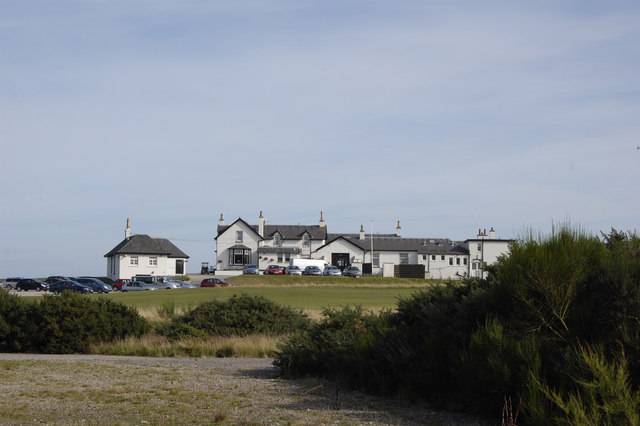 Scotland is the country that gave birth to golf, and excellent courses are provided not only for citizens by the City Council but by various private organisations. The Royal Aberdeen golf course was founded in 1790 and is the sixth oldest in the world, and the Royal Deeside course in the River Dee's valley are both excellent. You can also play golf at a number of public golf courses in the city, most notably at Hazlehead Park which has two 18-hole courses and at Queen's Links by the Beach (entrance on Golf Road).
Scotland is the country that gave birth to golf, and excellent courses are provided not only for citizens by the City Council but by various private organisations. The Royal Aberdeen golf course was founded in 1790 and is the sixth oldest in the world, and the Royal Deeside course in the River Dee's valley are both excellent. You can also play golf at a number of public golf courses in the city, most notably at Hazlehead Park which has two 18-hole courses and at Queen's Links by the Beach (entrance on Golf Road).
- Deeside Golf Club, Golf Road, Bieldside, AB15 9DL (Take A93 south-west from city centre, +44 1224 869457. This prestigious private course about 5 miles (8 km) outside the city was founded in 1903 but in the past few years has had major reconstruction work and is highly regarded. Set close to the valley of the River Dee, there are great views of the river and nearby forests.
- Royal Aberdeen Golf Course, Links Road, Bridge of Don, Aberdeen, AB23 8AT (From city centre, drive north up King Street and take the 2nd right after crossing the bridge over the River Don, or bus No. 1 or 2, +44 1224 702571. The Royal Aberdeen operates a celebrated links just north of the mouth of the River Don. The course runs essentially out and back along the North Sea shore. The outward nine (which is acknowledged as one of the finest in links golf anywhere in the world) cuts its way through some wonderful dune formation. The inland nine returns south over the flatter plateau. A traditional old Scottish links, it is well-bunkered with undulating fairways. It has an excellent balance of holes, strong par 4's, tricky par 3's and two classic par 5's, with the 8th (signature hole) protected by nine bunkers. The ever-changing wind, tight-protected greens and a magnificent finish makes Balgownie a test for the very best. It was highly praised by participants in the 2005 Senior British Open. The eminent golf writer Sam McKinlay was moved to say "There are few courses in these islands with a better, more testing, more picturesque outward nine than Balgownie".
Deeside Golf Club, Golf Road, Bieldside, AB15 9DL (Take A93 south-west from city centre, +44 1224 869457. This prestigious private course about 5 miles (8 km) outside the city was founded in 1903 but in the past few years has had major reconstruction work and is highly regarded. Set close to the valley of the River Dee, there are great views of the river and nearby forests.
Royal Aberdeen Golf Course, Links Road, Bridge of Don, Aberdeen, AB23 8AT (From city centre, drive north up King Street and take the 2nd right after crossing the bridge over the River Don, or bus No. 1 or 2, +44 1224 702571. The Royal Aberdeen operates a celebrated links just north of the mouth of the River Don. The course runs essentially out and back along the North Sea shore. The outward nine (which is acknowledged as one of the finest in links golf anywhere in the world) cuts its way through some wonderful dune formation. The inland nine returns south over the flatter plateau. A traditional old Scottish links, it is well-bunkered with undulating fairways. It has an excellent balance of holes, strong par 4's, tricky par 3's and two classic par 5's, with the 8th (signature hole) protected by nine bunkers. The ever-changing wind, tight-protected greens and a magnificent finish makes Balgownie a test for the very best. It was highly praised by participants in the 2005 Senior British Open. The eminent golf writer Sam McKinlay was moved to say "There are few courses in these islands with a better, more testing, more picturesque outward nine than Balgownie".
- For casual running, try the Esplanade along the beach, or Duthie Park (entrances on Polmuir Road and Riverside Drive), or Hazlehead Park in the western part of the city.
- PureGym, Shiprow AB11 5BW (opposite Maritime Museum, 0345 013 3201 (non-geographic number). Open 24 hours. Has a full range of cardio equipment, resistance machines and free weights area. Buy a day pass from a machine at the entrance, this gives you a PIN which you type into a keypad to gain access. Staff are on site until 8PM, after hours it's nominally unstaffed, though in practice there's usually someone around whatever the hour. CCTV cameras flood the area and impenetrable metal turnstiles permit access only to those with a PIN. As a result it feels safe even late at night, with a surprising number (male and female) exercising there till the early hours. Bring a padlock for your locker or buy one from the vending machine. An NCP car park is next door but the gym has deals with other city-centre car parks - ask for details. Day pass £7, monthly £15 + £15 / month.
- Other private gyms in the city are DW Fitness, David Lloyd, and Bannatyne's.
- Aberdeen Sports Village and Aquatics Centre, Linksfield Road (off King Street, near Kings College campus, Bus 1 or 2 from city, +44 1224 438900. M-F 17:30-22:30, Sa 07:30-19:30; Su 07:30-21:30. This University of Aberdeen centre has a wide range of public facilities including gyms, group exercise and sports hall, plus an Aquatics Centre with 50m pool and diving facilities.
- RGU Sport, Garthdee Rd AB10 7GE (RGU campus, take bus 1 from centre, +44 1224 263666. M-F 06:00-22:00, Sa Su 09:00-19:00. Has similar facilities to the Sports Village and a 25-m pool and climbing wall.
- Council-run services (Sport Aberdeen) include leisure centres, swimming pools and an ice-skating arena. One of the most popular is Beach Leisure Centre, Esplanade AB24 5NR (on the Prom, +44 1224 655401. There is a gym / fitness studio and other facilities for exercise and indoor sports, including climbing, table tennis, badminton and volleyball. There is a large swimming pool of the "water-park" style. It's not good for swimming laps (RGU is better for that), but has water slides, rapids and waves, and is great fun for the family. M-F 06:00-22:00, Sa Su 08:00-18:00.
PureGym, Shiprow AB11 5BW (opposite Maritime Museum, 0345 013 3201 (non-geographic number). Open 24 hours. Has a full range of cardio equipment, resistance machines and free weights area. Buy a day pass from a machine at the entrance, this gives you a PIN which you type into a keypad to gain access. Staff are on site until 8PM, after hours it's nominally unstaffed, though in practice there's usually someone around whatever the hour. CCTV cameras flood the area and impenetrable metal turnstiles permit access only to those with a PIN. As a result it feels safe even late at night, with a surprising number (male and female) exercising there till the early hours. Bring a padlock for your locker or buy one from the vending machine. An NCP car park is next door but the gym has deals with other city-centre car parks - ask for details. Day pass £7, monthly £15 + £15 / month.
Aberdeen Sports Village and Aquatics Centre, Linksfield Road (off King Street, near Kings College campus, Bus 1 or 2 from city, +44 1224 438900. M-F 17:30-22:30, Sa 07:30-19:30; Su 07:30-21:30. This University of Aberdeen centre has a wide range of public facilities including gyms, group exercise and sports hall, plus an Aquatics Centre with 50m pool and diving facilities.
RGU Sport, Garthdee Rd AB10 7GE (RGU campus, take bus 1 from centre, +44 1224 263666. M-F 06:00-22:00, Sa Su 09:00-19:00. Has similar facilities to the Sports Village and a 25-m pool and climbing wall.
Council-run services (Sport Aberdeen) include leisure centres, swimming pools and an ice-skating arena. One of the most popular is Beach Leisure Centre, Esplanade AB24 5NR (on the Prom, +44 1224 655401. There is a gym / fitness studio and other facilities for exercise and indoor sports, including climbing, table tennis, badminton and volleyball. There is a large swimming pool of the "water-park" style. It's not good for swimming laps (RGU is better for that), but has water slides, rapids and waves, and is great fun for the family. M-F 06:00-22:00, Sa Su 08:00-18:00.
Belmont Filmhouse, 49 Belmont Street (city centre, just off Union Street, about half-way along the street, +44 1224 343 500. Arthouse, foreign and selected mainstream films are shown here every day, in a historic building on Belmont Street. Films in languages other than English are subtitled. An adult ticket costs £10.00 (£8.50 for matinees) and child tickets cost £4.00. Tickets can be booked online or in person.
Satrosphere Science Centre, The Tramsheds, 179 Constitution Street, AB24 5TU, +44 1224 640340. Daily 10:00-17:00. The Satrosphere Science Centre was Scotland’s first science and discovery centre, first opened to the public in 1988. The centre has over 50 hands-on interactive exhibits and live science shows, which inspire your inner scientist and entertain the whole family. It is a great place for children, and is in what used to be the main depot for the city's tram system. Adults £5.75, children £4.50, family of four (including 1 or 2 adults) £17.00.
Aberdeen Harbour Cruises, Eurolink Pontoon next to Fish Market, Aberdeen Harbour (Enter harbour from Market Street; no parking here, use Union Square. Apr-Oct. Tours include harbour trips, spotting sea-life (dolphins, basking sharks, porpoises, puffins), and a ride out to the offshore wind farm.
Scotstown Moor Local Nature Reserve. 34 hectares of lowland heath
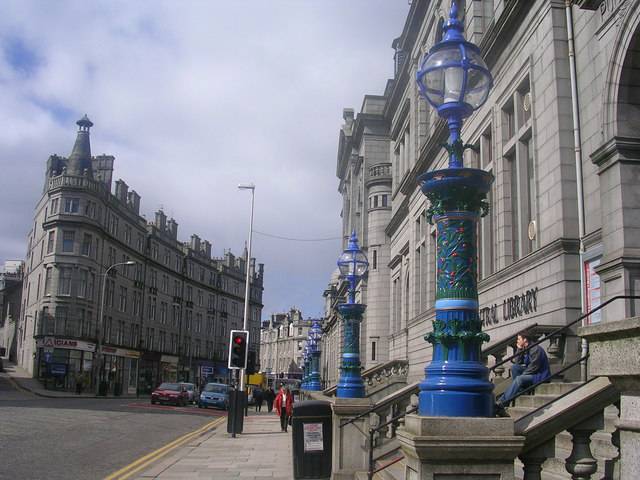
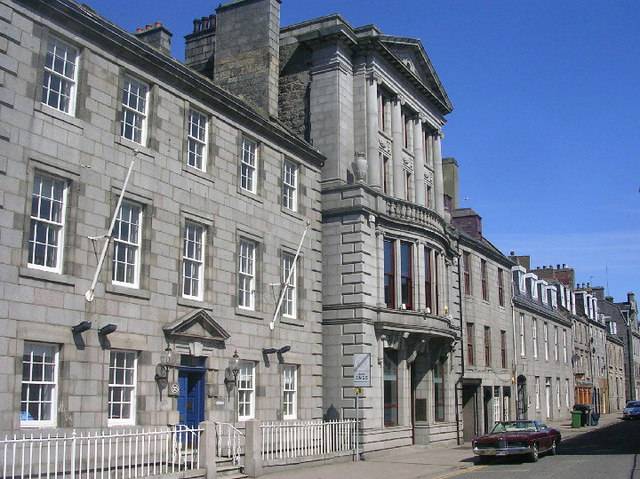
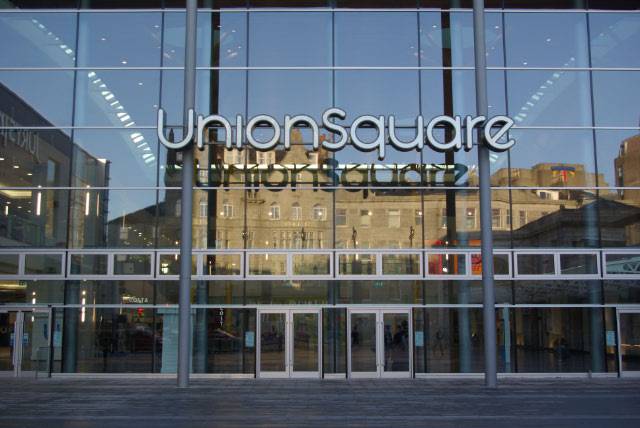 Aberdeen is the shopping capital of the north of Scotland, drawing shoppers from the entire region. Many Aberdonians have money to spend due to the oil industry. As there are no other nearby cities, there are a large number and quality of stores in the city for its size. For many decades, the main shopping street was Union Street, which rivalled the most prestigious streets in Britain. Today, Union Street is still considered the spiritual heart of shopping in Aberdeen and contains many shops, but primarily chain stores found in high streets all over the UK. A walk up and down Union Street is essential for any first visit to Aberdeen. The dramatic architecture, although now mostly in need of restoration, is not visible in storefronts at street level - look up to see the impressive carved granite and grand designs of each building. Sidewalks on the street get very busy during the day and especially on weekends.
Aberdeen is the shopping capital of the north of Scotland, drawing shoppers from the entire region. Many Aberdonians have money to spend due to the oil industry. As there are no other nearby cities, there are a large number and quality of stores in the city for its size. For many decades, the main shopping street was Union Street, which rivalled the most prestigious streets in Britain. Today, Union Street is still considered the spiritual heart of shopping in Aberdeen and contains many shops, but primarily chain stores found in high streets all over the UK. A walk up and down Union Street is essential for any first visit to Aberdeen. The dramatic architecture, although now mostly in need of restoration, is not visible in storefronts at street level - look up to see the impressive carved granite and grand designs of each building. Sidewalks on the street get very busy during the day and especially on weekends.
More upmarket stores have been gravitating from Union Street and other streets to the shopping malls in the city centre, and independent stores to the streets around Union Street. At the same time, some shops on Union Street have been moving downmarket. As a result, shopping in Aberdeen is spread out around Union Street, these malls, and surrounding streets. The shopping malls are extremely popular with Aberdonians. They include the Bon Accord Centre (entrances on Upperkirkgate and George Street), the St. Nicholas Centre (entrances on Upperkirkgate and St. Nicholas Square), the Trinity Centre (entrances on Union Street and Guild Street), The Academy (entrance on Schoolhill, specialises in boutique shops), and the newest and largest, Union Square on Guild Street. Today, nearly all the stores found on British high streets can be found in Aberdeen at these malls, on Union Street or a surrounding street. Most shops open at 9AM and close at 5PM or 6PM. Late-night shopping (till 8PM) is on Thursdays in Aberdeen, except Union Square where shops are open till 8pm every weeknight.
Aberdeen has a large collection of small, tucked-away shops which can provide everything from Bohemian dressware to Indian furniture. Good streets to find independent stores in the city centre are Rosemount Viaduct, Holburn Street, Rose Street, Chapel Street, Belmont Street, Upperkirkgate and The Green, along with Rosemount Place in the Rosemount area (to the north of the city centre).
There are few outdoor markets in Aberdeen aside from irregular international and Christmas markets which are organised every so often, typically on Union Terrace. There is also a less prestigious market on the Castlegate every Friday morning, selling general items.
The Farmers Market is held here last Saturday of the month 09:00-17:00 on Belmont Street.
You may walk past the Aberdeen Market building on Market Street. Aberdeen once had a grand and prestigious indoor market similar to (if not as big as) those in other cities such as the Grainger Market in Newcastle-upon-Tyne and the St. Nicholas Markets in Bristol but it was demolished in the 1980s and replaced by this. The current modern building provides an indoor market which offers permanent space to small stallholders providing retail, food or other services. Most of the units inside are small shop-like enclosures, and the low rents provide a chance for small start-ups and local entrepreneurs to get a foothold while building up their business, before moving to more established areas of the city-centre. Although it appears downmarket, footfall is quite high and you may encounter hidden gems! For example, amazing sushi was available at a stall here, until the proprietor's success here enabled him to open his own restaurant on Huntly Street (further up Union Street).
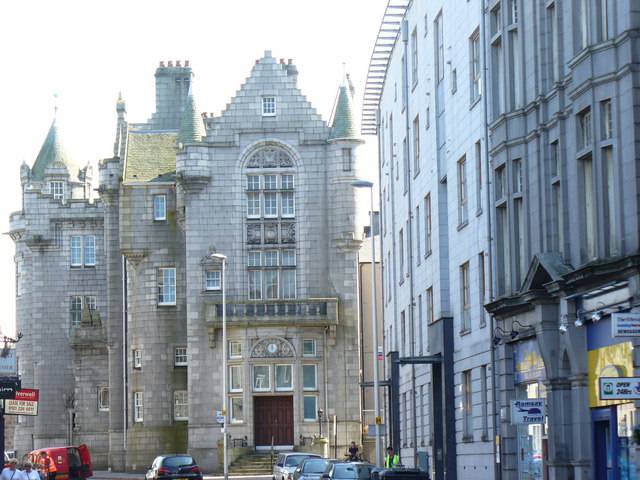 If you are looking for food (e.g. if staying in one of the aparthotels or walking round the city has made you hungry), or general items such as toothpaste, these are good places to go. Aberdonians buy much or all their food and everyday items at supermarkets, of which there are many in the city, but the largest ones tend to be in suburbs or on the outskirts. However, there are also some in the city centre or close to the centre. Most city supermarkets are open till 9PM or later every night. If you have a car, the Tesco Extra hypermarket at Laurel Drive, Danestone and Asda superstore at the Bridge of Dee roundabout are open 24-hours. Some of the useful, more central stores are as follows:
If you are looking for food (e.g. if staying in one of the aparthotels or walking round the city has made you hungry), or general items such as toothpaste, these are good places to go. Aberdonians buy much or all their food and everyday items at supermarkets, of which there are many in the city, but the largest ones tend to be in suburbs or on the outskirts. However, there are also some in the city centre or close to the centre. Most city supermarkets are open till 9PM or later every night. If you have a car, the Tesco Extra hypermarket at Laurel Drive, Danestone and Asda superstore at the Bridge of Dee roundabout are open 24-hours. Some of the useful, more central stores are as follows:
- The Co-operative, Union Street, small supermarket in the city centre that offers most everyday items. Union Street store is just past the Music Hall and is open daily 6AM-11PM every day.
- Marks & Spencer, St. Nicholas Square/St. Nicholas Centre (opens 9AM, closes M-W 6PM, Th 8PM, F Sa 7PM) and another at Union Square (M-Sa 8AM-8PM; Su 10AM-6PM), upmarket supermarkets.
- Morrisons, King Street, larger supermarket popular with students (M-Sa 8AM-10PM; Su 9AM-8PM)
- Asda, Beach Retail Park, behind funfair, large supermarket useful if you are in the beach area (daily 8AM-10PM) and another at Garthdee Road by the Bridge of Dee roundabout, very large supermarket (open 24 hours).
The Co-operative, Sainsbury's Local and Tesco Express mini-supermarkets or convenience stores can be found in the city centre and around. These are all open from early till late (usually 11PM). Useful such stores include Sainsbury's Local stores on Upperkirkgate/St. Nicholas Centre, Rosemount Place, and on Holburn Street; a Tesco Express store at the western end of Union Street and another on Holburn Street; and numerous small Co-Operative stores such as the west end of Union Street, Rosemount Place and in numerous suburbs. If hungry late at night, there is a 24-hour convenience store on Market Street.
The Co-operative, Union Street, small supermarket in the city centre that offers most everyday items. Union Street store is just past the Music Hall and is open daily 6AM-11PM every day.
Marks & Spencer, St. Nicholas Square/St. Nicholas Centre (opens 9AM, closes M-W 6PM, Th 8PM, F Sa 7PM) and another at Union Square (M-Sa 8AM-8PM; Su 10AM-6PM), upmarket supermarkets.
Morrisons, King Street, larger supermarket popular with students (M-Sa 8AM-10PM; Su 9AM-8PM)
Asda, Beach Retail Park, behind funfair, large supermarket useful if you are in the beach area (daily 8AM-10PM) and another at Garthdee Road by the Bridge of Dee roundabout, very large supermarket (open 24 hours).
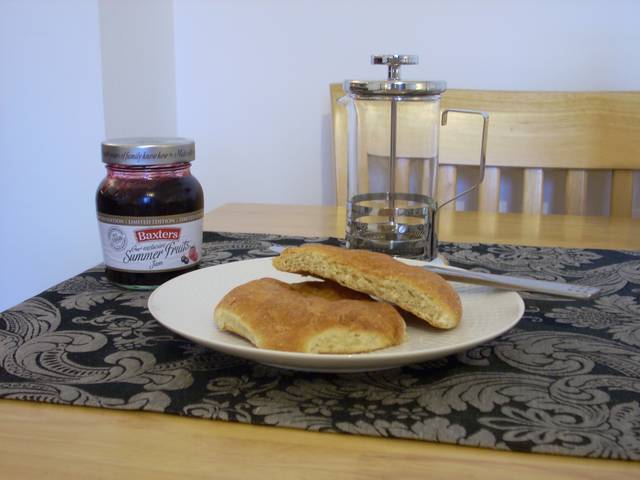 A local specialty is the Aberdeen buttery or rowie, a cross between a pancake and a croissant. They have a flaky yet heavy texture and are very salty. They're served plain or with butter or jam to make a tea-time or mid-afternoon snack. They're seldom found in cafes or restaurants, you buy them in bakeries or supermarkets to eat at home or on the go.
A local specialty is the Aberdeen buttery or rowie, a cross between a pancake and a croissant. They have a flaky yet heavy texture and are very salty. They're served plain or with butter or jam to make a tea-time or mid-afternoon snack. They're seldom found in cafes or restaurants, you buy them in bakeries or supermarkets to eat at home or on the go.
- Books and Beans, 22 Belmont Street (City centre, +44 1224 646438. A second-hand book shop offering internet access and lunch menu.
- Contour Cafe, 47 The Green (city centre, +44 1224 582151. Sit-in lunch and outside catering.
- The City Bar & Diner, 37-39 Netherkirkgate (city centre, +44 1224 649592. Fully licensed restaurant and outside catering.
- The Coffee House, 1 Gaelic Lane (City centre, +44 1224 478621. Coffee and lunch.
- Plus numerous Costa, Cafe Nero and Starbucks branches throughout the city centre.
Books and Beans, 22 Belmont Street (City centre, +44 1224 646438. A second-hand book shop offering internet access and lunch menu.
Contour Cafe, 47 The Green (city centre, +44 1224 582151. Sit-in lunch and outside catering.
The City Bar & Diner, 37-39 Netherkirkgate (city centre, +44 1224 649592. Fully licensed restaurant and outside catering.
The Coffee House, 1 Gaelic Lane (City centre, +44 1224 478621. Coffee and lunch.
- The upper level at Union Square complex has the usual chains, eg Ask, Yo! Sushi, Wagamama, TGI Fridays and Giraffe.
- Pizza Express has branches in that complex and at 402-404 Union Street and 47 Belmont St.
- Lahore Karahi, 145 King Street, +44 1224 647295. A relatively new entrant to the established Aberdonian Curry Houses, Lahore Karahi offers arguably the most authentic Pakistani/Indian cuisine, and at the best of prices too.
- La Lombarda, 2-8 King Street (next to Castlegate, +44 1224 640916. One of most popular Italians, and with good reason. Claims to be oldest Italian restaurant around but food is far from being 'good' Italian. It's more English-style Italian.
- The Royal Thai, 29 Crown Terrace, +44 1224 212922. The oldest Thai restaurant in Aberdeen and it shows in how exceptional the food is.
- Chinatown, 11 Dee Street, +44 1224 211111. Just off Union Street. Great Chinese food along with nice, vibrant decor and a bar make this restaurant highly recommended.
- The Illicit Still, Netherkirkgate (off Broad Street, +44 1224 623123. Sensibly priced pub grub.
- Nazma Tandoori, 62 Bridge Street, +44 1224 211296. Alongside the Blue Moon, Holburn Street, this is the most authentic and finest Indian restaurant in Aberdeen.
- Moonfish Cafe, 9 Correction Wynd (behind GAP, +44 1224 644166. High quality seafood restaurant. Rated as one of the best restaurants in Aberdeen.
- The Tippling House, 4 Belmont Street. A late-night cocktail bar that serves tasty bar snacks and dinner.
Lahore Karahi, 145 King Street, +44 1224 647295. A relatively new entrant to the established Aberdonian Curry Houses, Lahore Karahi offers arguably the most authentic Pakistani/Indian cuisine, and at the best of prices too.
La Lombarda, 2-8 King Street (next to Castlegate, +44 1224 640916. One of most popular Italians, and with good reason. Claims to be oldest Italian restaurant around but food is far from being 'good' Italian. It's more English-style Italian.
The Royal Thai, 29 Crown Terrace, +44 1224 212922. The oldest Thai restaurant in Aberdeen and it shows in how exceptional the food is.
Chinatown, 11 Dee Street, +44 1224 211111. Just off Union Street. Great Chinese food along with nice, vibrant decor and a bar make this restaurant highly recommended.
The Illicit Still, Netherkirkgate (off Broad Street, +44 1224 623123. Sensibly priced pub grub.
Nazma Tandoori, 62 Bridge Street, +44 1224 211296. Alongside the Blue Moon, Holburn Street, this is the most authentic and finest Indian restaurant in Aberdeen.
Moonfish Cafe, 9 Correction Wynd (behind GAP, +44 1224 644166. High quality seafood restaurant. Rated as one of the best restaurants in Aberdeen.
The Tippling House, 4 Belmont Street. A late-night cocktail bar that serves tasty bar snacks and dinner.
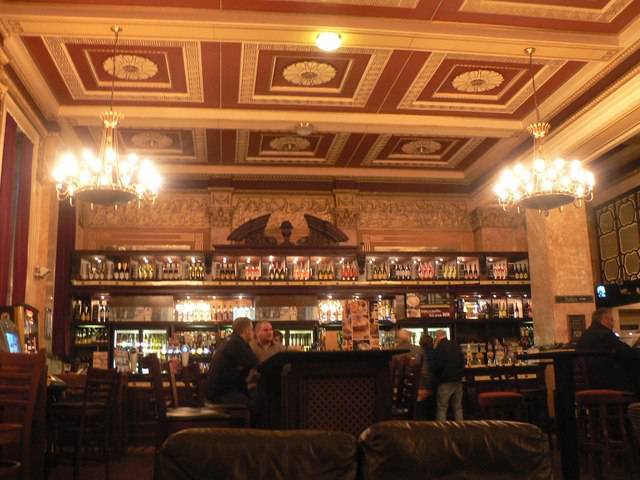 Like any Scottish city Aberdeen has a large number of bars and nightclubs. The role of alcohol in Scottish culture is frequently debated but for better or worse, heavy drinking is a feature of nights out for many in Scotland, especially on weekend nights. However, this is less pronounced in suburban establishments and those outside the city-centre or catering to an older clientele. Aberdeen is a city with a large number of young people (including students and young professionals) and people of all ages who like to go out. As a result, while not on the same level as Glasgow, nights out are often lively - much livelier than many visitors would expect. Especially on weekend nights, the city centre is full of revellers, even in the most severe winter weather (Aberdonians, like those in Newcastle, often do not dress for a night out according to the weather).
Like any Scottish city Aberdeen has a large number of bars and nightclubs. The role of alcohol in Scottish culture is frequently debated but for better or worse, heavy drinking is a feature of nights out for many in Scotland, especially on weekend nights. However, this is less pronounced in suburban establishments and those outside the city-centre or catering to an older clientele. Aberdeen is a city with a large number of young people (including students and young professionals) and people of all ages who like to go out. As a result, while not on the same level as Glasgow, nights out are often lively - much livelier than many visitors would expect. Especially on weekend nights, the city centre is full of revellers, even in the most severe winter weather (Aberdonians, like those in Newcastle, often do not dress for a night out according to the weather).
There are hundreds of licensed premises in the city that cater for every taste, from upmarket bars, to more casual bars, and a wide range of pubs. There are also numerous clubs, some very good (e.g. Snafu on Union Street opposite the Town House). Due to the large student population there are often student deals around. These may be extended to everyone and not just those with student ID cards. If you plan to go to a club, bring photographic ID showing your date of birth as this is often demanded by doormen - a photocard driving licence or passport is effective. Remember that smoking is illegal inside public venues - you will notice crowds of smokers standing outside even in freezing conditions. This has also led to the trend of installing/ re-opening Beer Gardens that are now constantly full of smokers.
The usual and most approachable starting point for a night out is Belmont Street. It is home to numerous bars and nightclubs. Union Street and to a lesser extent Langstane Place and Bon Accord Street (off Union Street) are also destinations for a night out due to their numerous venues. Various other city-centre streets are also home to drinking establishments.
- Revolution Bar, 25 Belmont St, +44 1224 645475. Part of the Revolution chain specialising in cocktails. Has a wonderful smoking terrace out the back.
- The Wild Boar, 19 Belmont Street, +44 1224 625357. A quieter setting, sometimes with acoustic live music. Known for its wine selection. A Belhaven pub.
- Siberia, 9 Belmont Street, +44 1224 645328. Serves 99 flavours of vodka and has a smoking terrace out the back.
- Cafe Drummond, Belmont Street, +44 1224 619930. A small late-licence venue which focuses on live bands.
- O'Neils Aberdeen, 9-10 Back Wynd. Irish-themed pub with a nightclub upstairs. Nationwide chain.
- Ma Cameron's, Little Belmont Street, +44 1224 644487. The oldest pub in the city. Shows live football in a traditional pub setting with a roof garden. A Belhaven pub.
- Old School House, Little Belmont Street, +44 1224 626490. A quieter pub near Belmont Street. A Belhaven pub.
- Slain's Castle, Belmont Street. A highlight of Aberdeen's pub scene. An old church converted into a gothic style pub, famous for it's Seven Deadly Sins cocktails. Hallowe'en is a particularly eventful night here. A Stonegate pub.
All of the above bars serve a variety of food at reasonable pub prices, with the exception of Cafe Drummond's.
On either side of Belmont Street and you'll find many other pubs:
- The Prince of Wales, 7 St Nicholas Lane (Just off of Union Street, +44 1224 640597. Boasting one of the longest bars in Aberdeen and eight Real Ale pumps, sometimes called the "PoW" or quite simply the "Prince", this pub is one of the hidden gems of Aberdeen packed with locals, oil workers and students alike. They keep their beer exceedingly well. A Belhaven pub.
- Soul, 333 Union St (Uppermarket, +44 1224 211150. In the converted Langstane Kirk.
- Krakatoa, 2 Trinity Quay (can be found by heading down Market Street and turning left when you get to the harbour, +44 1224 587602. Open till 3AM at the weekend. Is a tiki dive bar and Grassroots music venue. Probably the finest watering hole for those of a rock'n'roll persuasion. It's a drinker's paradise, with over a huge range of world beers, real ale, real ciders, a collection of authentic absinthe, a huge selection of rums, and even outlandish tiki cocktails served in pint jars. Regular live music nights (both local and touring bands), a welcoming atmosphere and Aberdeen's best jukebox make this a must for any visiting rockers.
- The Grill, 213 Union Street (Opposite the Music Hall, +44 1224 573530. A small severely plain interior, but a haven for a whisky connoisseur; whiskies from Scotland and around the world. Tasting menu available.
- Jam Jar, The Galleria, Langstane Place, +44 1224 574237. Very cheap and popular, especially during the week.
- Paramount, 23-25 Bon-Accord St, +44 1224 590500. Next to Jam Jar and very similar.
- Prohibition, 31 Langstane Pl, +44 1224 625555. Mainstream.
- Espionage, 120 Union St, +44 1224 561006. Is a large club on Union Street. The most mainstream nightclub. It has three floors covering varied musical taste. Entry is free, but drinks are full priced.
- Triple Kirks and Exodus Nightclub, Schoolhill, +44 1224 619920. An excellent student & local drinking hole and part of the Stonegate pub chain. Their club Exodus focuses on Indie/Alternative and Classic Rock, Pop & Soul. As a rule, it is cheap with very varied music. Tuesday nights (which feature soul, Motown music) are particularly popular.
Espionage, 120 Union St, +44 1224 561006. Is a large club on Union Street. The most mainstream nightclub. It has three floors covering varied musical taste. Entry is free, but drinks are full priced.
Triple Kirks and Exodus Nightclub, Schoolhill, +44 1224 619920. An excellent student & local drinking hole and part of the Stonegate pub chain. Their club Exodus focuses on Indie/Alternative and Classic Rock, Pop & Soul. As a rule, it is cheap with very varied music. Tuesday nights (which feature soul, Motown music) are particularly popular.
Revolution Bar, 25 Belmont St, +44 1224 645475. Part of the Revolution chain specialising in cocktails. Has a wonderful smoking terrace out the back.
The Wild Boar, 19 Belmont Street, +44 1224 625357. A quieter setting, sometimes with acoustic live music. Known for its wine selection. A Belhaven pub.
Siberia, 9 Belmont Street, +44 1224 645328. Serves 99 flavours of vodka and has a smoking terrace out the back.
Cafe Drummond, Belmont Street, +44 1224 619930. A small late-licence venue which focuses on live bands.
O'Neils Aberdeen, 9-10 Back Wynd. Irish-themed pub with a nightclub upstairs. Nationwide chain.
Ma Cameron's, Little Belmont Street, +44 1224 644487. The oldest pub in the city. Shows live football in a traditional pub setting with a roof garden. A Belhaven pub.
Old School House, Little Belmont Street, +44 1224 626490. A quieter pub near Belmont Street. A Belhaven pub.
Slain's Castle, Belmont Street. A highlight of Aberdeen's pub scene. An old church converted into a gothic style pub, famous for it's Seven Deadly Sins cocktails. Hallowe'en is a particularly eventful night here. A Stonegate pub.
The Prince of Wales, 7 St Nicholas Lane (Just off of Union Street, +44 1224 640597. Boasting one of the longest bars in Aberdeen and eight Real Ale pumps, sometimes called the "PoW" or quite simply the "Prince", this pub is one of the hidden gems of Aberdeen packed with locals, oil workers and students alike. They keep their beer exceedingly well. A Belhaven pub.
Soul, 333 Union St (Uppermarket, +44 1224 211150. In the converted Langstane Kirk.
Krakatoa, 2 Trinity Quay (can be found by heading down Market Street and turning left when you get to the harbour, +44 1224 587602. Open till 3AM at the weekend. Is a tiki dive bar and Grassroots music venue. Probably the finest watering hole for those of a rock'n'roll persuasion. It's a drinker's paradise, with over a huge range of world beers, real ale, real ciders, a collection of authentic absinthe, a huge selection of rums, and even outlandish tiki cocktails served in pint jars. Regular live music nights (both local and touring bands), a welcoming atmosphere and Aberdeen's best jukebox make this a must for any visiting rockers.
The Grill, 213 Union Street (Opposite the Music Hall, +44 1224 573530. A small severely plain interior, but a haven for a whisky connoisseur; whiskies from Scotland and around the world. Tasting menu available.
Jam Jar, The Galleria, Langstane Place, +44 1224 574237. Very cheap and popular, especially during the week.
Paramount, 23-25 Bon-Accord St, +44 1224 590500. Next to Jam Jar and very similar.
Prohibition, 31 Langstane Pl, +44 1224 625555. Mainstream.
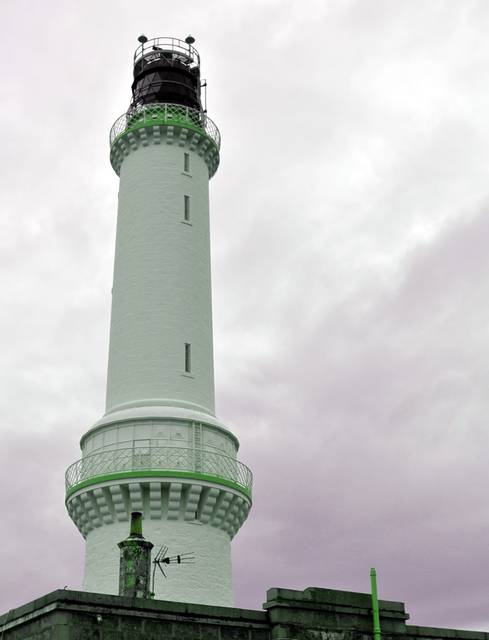 Aberdeen has been rated as the safest or among the safest cities in the UK, with a crime rate lower than the rest of the country. It is very unusual for visitors to experience crime in Aberdeen, especially compared to other UK cities such as London. However, use common sense. Whether male or female, avoid walking through deprived areas such as Tillydrone (north of Bedford Road and east of St. Machar Drive) and Torry (the south bank of River Dee) as these have a relatively higher crime rate. Also, avoid walking alone south of the River Dee at night as muggings and assaults here are reported frequently in the media.
Aberdeen has been rated as the safest or among the safest cities in the UK, with a crime rate lower than the rest of the country. It is very unusual for visitors to experience crime in Aberdeen, especially compared to other UK cities such as London. However, use common sense. Whether male or female, avoid walking through deprived areas such as Tillydrone (north of Bedford Road and east of St. Machar Drive) and Torry (the south bank of River Dee) as these have a relatively higher crime rate. Also, avoid walking alone south of the River Dee at night as muggings and assaults here are reported frequently in the media.
Street beggars sometimes operate in the city-centre, but are relatively harmless. Aberdeen beggars are not aggressive and while they will ask passers-by indiscriminately for spare change, they can just be ignored. Aberdeen is a harbour city and prostitution occurs in certain streets in the harbour area. Prostitutes are not always provocatively dressed and may approach male passers-by saying "Are you looking for business?". Do not engage a prostitute as this is illegal.
The main possibility of hassle is with alcohol-related aggression at night (particularly weekend nights). While few Scots would admit it, most cannot handle anything like as much alcohol as they would claim and on nights out, many (both men and women) drink far more than they can handle. Public drunkenness on weekend nights is an issue, as throughout the UK. As a result, brawls, assaults and abuse (e.g. racist or homophobic language) are not uncommon and there is a heavy police presence on weekend nights. To avoid any hassle, firstly avoid drinking more than you can handle yourself. Avoid getting into arguments, making eye contact with groups of males, or staring at obviously drunken individuals. If you are from England, avoid displays of English symbolism such as the St. George's Cross or wearing England sports kits as this may make you or your group a target for aggressive drunks looking for an excuse for a fight. Also, be aware of having your drink spiked at city bars and clubs; do not allow a stranger to buy a drink for you or let your glass out of your sight.
The city is well-covered by the main UK mobile phone networks - nearly every Aberdonian has a smartphone and seems to be using it most of the time. You can also access the internet at the following locations:
- Books and Beans, 22 Belmont Street, +44 1224 646438. Mostly acting as a fairtrade cafe and second-hand bookstore, this establishment has a few PCs for internet access while you drink.
- Aberdeen Central Library, Rosemount Viaduct (just along from His Majesty's Theatre, or right in front of you if you walk down Union Terrace from Union Street. 9AM to 5PM (till 8PM on M and W). The central library (one of the libraries founded by Andrew Carnegie) has a few computers on the upper level where you can access the internet for up to 20 minutes free of charge without being a library member. They are situated next to the staircase.
You can also access free wi-fi (i.e. wireless internet access) if you bring your laptop/tablet/smartphone in the following areas:
- Union Square. The main atrium and the upper level at the south atrium (where the Starbucks is) have free Wi-Fi, and there is a Costa coffee stand and the Peckhams cafe in the main atrium which provide seats if you order a beverage or snack.
- Ninety-Nine, Back Wynd (opposite taxi rank, +44 1224 631640. Ninety-Nine is a trendy bar on Back Wynd, that also serves food and coffee, with free wi-fi.
- The Archibald Simpson, corner of Union Street/Castle Street and King Street (opposite Castlegate, +44 1224 621365. Named after one of the architects responsible for many of Aberdeen's distinctive granite buildings, this pub is in a grand building that used to be a bank. The pub has free wi-fi.
Books and Beans, 22 Belmont Street, +44 1224 646438. Mostly acting as a fairtrade cafe and second-hand bookstore, this establishment has a few PCs for internet access while you drink.
Aberdeen Central Library, Rosemount Viaduct (just along from His Majesty's Theatre, or right in front of you if you walk down Union Terrace from Union Street. 9AM to 5PM (till 8PM on M and W). The central library (one of the libraries founded by Andrew Carnegie) has a few computers on the upper level where you can access the internet for up to 20 minutes free of charge without being a library member. They are situated next to the staircase.
Union Square. The main atrium and the upper level at the south atrium (where the Starbucks is) have free Wi-Fi, and there is a Costa coffee stand and the Peckhams cafe in the main atrium which provide seats if you order a beverage or snack.
Ninety-Nine, Back Wynd (opposite taxi rank, +44 1224 631640. Ninety-Nine is a trendy bar on Back Wynd, that also serves food and coffee, with free wi-fi.
The Archibald Simpson, corner of Union Street/Castle Street and King Street (opposite Castlegate, +44 1224 621365. Named after one of the architects responsible for many of Aberdeen's distinctive granite buildings, this pub is in a grand building that used to be a bank. The pub has free wi-fi.

 The main city post office is at the west end of Union Street close to the junction with Holburn Street. There's another in the basement of WH Smith in the St Nicholas Centre. There is a smaller post office in the back of RS McColl on the Castlegate. Post offices are usually open Mon-Fri 09:00-17:00, Sat 09:00-12:30.
The main city post office is at the west end of Union Street close to the junction with Holburn Street. There's another in the basement of WH Smith in the St Nicholas Centre. There is a smaller post office in the back of RS McColl on the Castlegate. Post offices are usually open Mon-Fri 09:00-17:00, Sat 09:00-12:30.
Spot the golden post boxes amidst the standard red ones. These honour local winners of gold medals at the 2012 London Olympics: on Castlegate for rower Katherine Grainger, on Golden Square for Paralympic cyclist Neil Fachie, and in the nearby town of Westhill for sprint kayaker Tim Brabants.
The big four Scottish banks have branches throughout the city, although they're dwindling: these are Bank of Scotland, Royal Bank of Scotland, Clydesdale Bank and TSB. Union Street has a concentration of these and other banks, including Natwest, HSBC, Barclays, Nationwide, Santander, Halifax and Virgin Money. Standard hours are M-F 09:30-17:00, with the city centre branches often also open Saturday mornings.
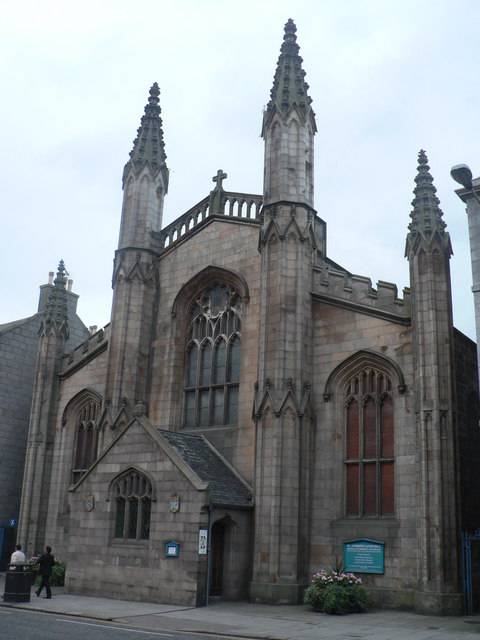
There are some 140 active churches in Aberdeen, two mosques, one synagogue and one Buddhist temple.
The three cathedrals are St Machar's in Old Aberdeen (Presbyterian, so ecclesiastically it's not a cathedral), St Mary's on Huntly Street (Roman Catholic) and St Andrew's on King Street (Episcopalian).
See Aberdeenshire for the full range of castles, scenery, whisky distilleries, golf resorts, and what you will. Some within a day trip are:
- Stonehaven, a picturesque fishing port 15 miles south, with Dunottar Castle.
- Banchory for Crathes Castle and Ballater for Balmoral.
- Cairngorms National Park starts 30 miles west of the city, and its Aberdeenshire side lends itself to day-trips, whereas the Spey Valley side needs a longer stay, eg in Aviemore.
[[Stonehaven]], a picturesque fishing port 15 miles south, with Dunottar Castle.
[[Banchory]] for Crathes Castle and [[Ballater]] for Balmoral.
[[Cairngorms National Park]] starts 30 miles west of the city, and its Aberdeenshire side lends itself to day-trips, whereas the Spey Valley side needs a longer stay, eg in [[Aviemore]].
